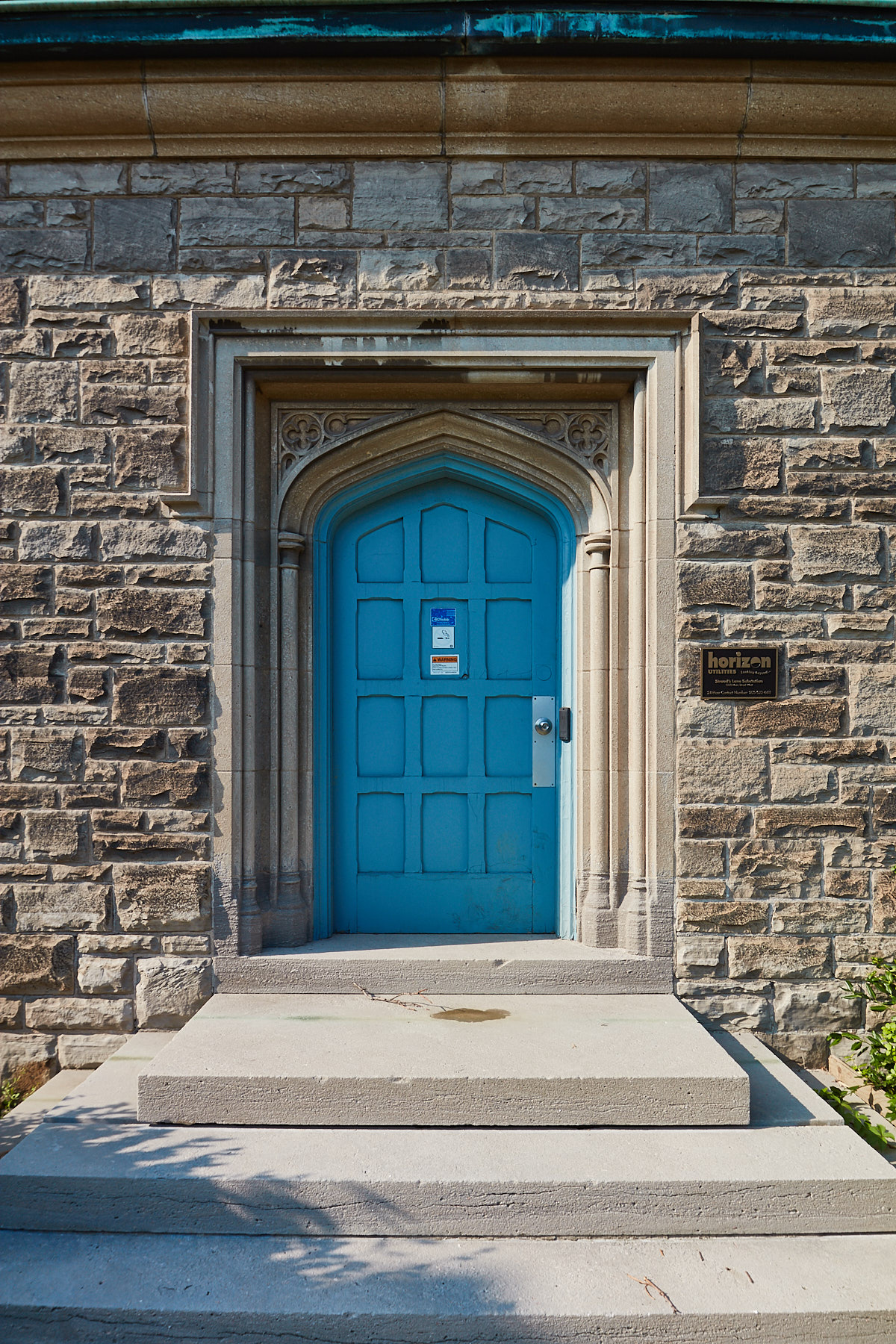
The Architecture of Hydro-Electric Buildings in Hamilton
The rich architectural legacy of The Electric City
In the early 20th century, Hamilton was Canada’s Electric City, a pioneer in the supply and distribution of hydro-electricity. A 56-km high-voltage transmission line from DeCew Falls in St. Catharines to downtown Hamilton that was completed in 1898 was the longest in Canada. As a result, for a few decades, Hamilton had the cheapest and most reliable supply of electrical power in the world.
This transmission line terminated at the Cataract Power Company’s main station on Victoria Avenue North. From there, it was distributed to smaller sub-stations around the city for further distribution to individual homes and businesses. Many of these sub-stations are still standing today.
Some have been converted to other uses, but many still function as important elements of Hamilton’s electrical infrastructure.
This exhibition celebrates the rich architectural legacy of early hydro buildings in Hamilton. Whereas modern hydro buildings tend to be windowless boxes with no architectural interest, Hamilton’s early hydro buildings were designed by prominent local architects; each one is unique.
Architectural photographer Francis Fougere has captured the character and beauty of these utilitarian structures, presented in 3 chronological groupings.
HAMILTON, THE ELECTRIC CITY
In the early 20th century Hamilton was known as Canada’s ‘Electric City’ because it had one of the earliest Hydro-Electric Systems in Canada. This system began operation in 1898 and was built by a private power company called the Cataract Power Company. The Cataract Power Company was formed by a group of local entrepreneurs who raised capital to build a power generating station at DeCew Falls in St. Catharines, a 35-mile transmission line to transmit electrical current to their station on Victoria Avenue North, and a network of substations to distribute power to their customers throughout the city. This pioneering system utilized new technology developed by George Westinghouse, an American industrialist who hired the world’s leading electrical engineers, including the brilliant Serbian engineer Nikolas Tesla, to make long distance transmission of electricity a reality. The new technology was showcased at the 1891 World Fair in Chicago. By 1898, the Cataract Power Company had built a hydroelectric system utilizing this revolutionary technology. Electric power would subsequently transform the way we live and work.
In 1911, Hamilton established a municipally-owned Hydro Electric System to distribute power supplied by the newly created Hydro Electric Power Commission of Ontario (Ontario Hydro). Through an Act of Parliament, the people of Ontario created a publicly owned power company that would become the largest publicly owned utility in the world.
Ontario Hydro supplied hydro-electric power generated at Niagara Falls to Hamilton along a new transmission line built along the beach strip. Hamilton Hydro established a distribution system of sub-stations across the city so that every citizen could have access to affordable electric power. By 1964 there were 22 sub-stations in the lower and upper city. Local architects were hired to design the stations so that they would compliment the neighbourhoods they were located in.
The Cataract Power Company operated in parallel with the municipal system until 1930.
The company’s assets were purchased by Ontario Hydro and its local infrastructure, including sub-stations, was transferred to Hamilton Hydro. The DeCew Generating Station is still in use today and is the oldest operating hydro-electric generating station in Canada.
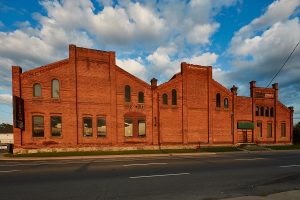
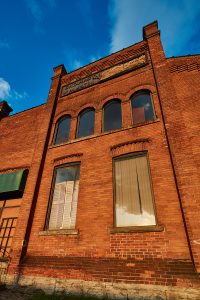
EARLY SUB-STATIONS, 1986 – 1920
The first Hamilton sub-station on Victoria Avenue North served as the terminus of the Cataract Power Company’s high-voltage transmission line from DeCew Falls in St. Catharines. It housed transformers and electrical switchboards required to step the voltage down for safe distribution. The station was designed by architect George Mills. It has an industrial character with Italianate details. As the system expanded, additional sub-stations were built to serve the different parts of
the city. The sub-stations were fireproof buildings that housed switchgear. Transformers were located in a yard behind the building. In the early years this equipment was monitored and controlled manually and workers were on site 24 hours a day, which is why window space is so generous in the early buildings.
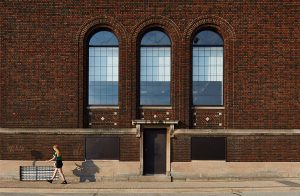 The early introduction of electricity to Hamilton by the Cataract Power Company was not without its challenges. While industrial customers paid discounted hydro rates, residential customers paid full price, making electricity unaffordable for many. Under public pressure, the City of Hamilton formed a publicly-owned rival to Cataract to provide residential hydro power, leading to the creation of Hamilton Hydro in 1911. Electricity was still an emerging technology at this time, and so concerns about its safety and reliability were prevalent. Hydro companies used architectural styling as one means to instill confidence in the system amongst a skeptical public. Their buildings used a familiar and reassuring architectural language; the popular neo classicism more often associated with banks and libraries. Stately brick arches and delicately carved stone friezes spoke little about the transformers and capacitors humming within, but reassured a hesitant populace that, like the institutions they resembled, the electricity that flowed into homes was both reliable and safe.
The early introduction of electricity to Hamilton by the Cataract Power Company was not without its challenges. While industrial customers paid discounted hydro rates, residential customers paid full price, making electricity unaffordable for many. Under public pressure, the City of Hamilton formed a publicly-owned rival to Cataract to provide residential hydro power, leading to the creation of Hamilton Hydro in 1911. Electricity was still an emerging technology at this time, and so concerns about its safety and reliability were prevalent. Hydro companies used architectural styling as one means to instill confidence in the system amongst a skeptical public. Their buildings used a familiar and reassuring architectural language; the popular neo classicism more often associated with banks and libraries. Stately brick arches and delicately carved stone friezes spoke little about the transformers and capacitors humming within, but reassured a hesitant populace that, like the institutions they resembled, the electricity that flowed into homes was both reliable and safe.
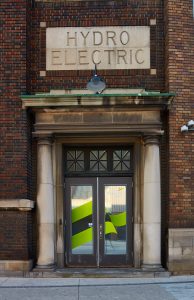
Two early sub-stations, located on Hughson Street and Dundurn Street, have a very similar design. Both are designed in the Edwardian Classical style and are clad in a light brown textured brick. The Hughson Station is now part of a larger hydro station that is still operational and the original windows have been replaced to meet modern safety requirements. The Dundurn Station has an elegant entrance porch with classical columns.
It was decommissioned in 1996 and has been repurposed as the Staircase Theatre.
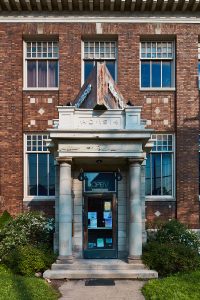
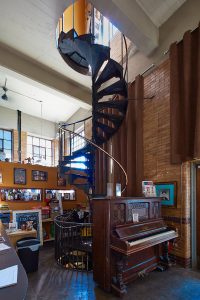
CITY BEAUTIFUL INFLUENCE, 1920-1945
Hamilton Hydro initially opened a small office in the basement of the original City Hall on James St. North. By 1922, they had so many customers, they purchased and renovated the former Bank of British North America building on King St. West designed by William Thomas. The renovations undertaken by Hutton & Souter included a storefront at street level to display household electrical appliances and a marquee with electric lights.
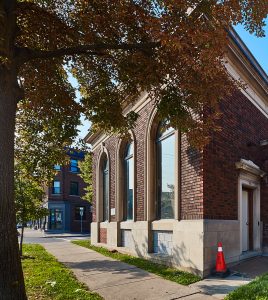 In the 1920s, the architectural design of sub-stations became a major focus for Hamilton Hydro. Influenced by City Beautiful ideas about the importance of well-designed public spaces and buildings, the design of these utilitarian buildings was elevated to the level of architecture. Different architects were commissioned to design the various sub-stations. They were instructed to use high quality materials. The buildings had to be fireproof and the interior requirements were set, but the architects were given free reign to design the exterior. The result is a collection of unique buildings in various styles sharing a notable attribute; the exterior expression says much about civic pride, but very little, if anything about the function within.
In the 1920s, the architectural design of sub-stations became a major focus for Hamilton Hydro. Influenced by City Beautiful ideas about the importance of well-designed public spaces and buildings, the design of these utilitarian buildings was elevated to the level of architecture. Different architects were commissioned to design the various sub-stations. They were instructed to use high quality materials. The buildings had to be fireproof and the interior requirements were set, but the architects were given free reign to design the exterior. The result is a collection of unique buildings in various styles sharing a notable attribute; the exterior expression says much about civic pride, but very little, if anything about the function within.
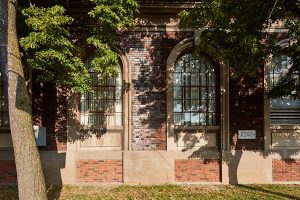 From the street the sub-stations blended in with the streetscape. In downtown locations they were designed to looks like commercial buildings and in suburban locations they were disguised as houses. The architects devised inventive ways to screen the transformers from view.
From the street the sub-stations blended in with the streetscape. In downtown locations they were designed to looks like commercial buildings and in suburban locations they were disguised as houses. The architects devised inventive ways to screen the transformers from view.
If you look carefully you will see that most of the downtown sub-stations have lettering incorporated into the design that indicate it is a hydro building.
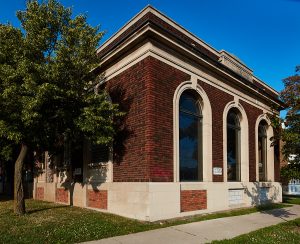
The choice of style followed the latest architectural fashions and was responsive to context. Many of the downtown stations were built at this time in a Beaux-Arts style. The architect George T. Evans designed an expansion to the Hughson Street Station and the Spadina Street Station in a similar Beaux-Arts style with large arched windows. The Stroud Station, located near the entrance to the McMaster University, was designed in the same Gothic Revival style as the university buildings designed by Hutton & Souter. The Aberdeen and Kenilworth Stations look identical to the Arts & Crafts houses next door to them and were designed by William J. Walsh.
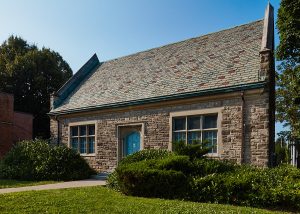
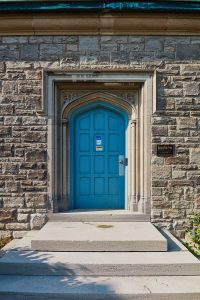
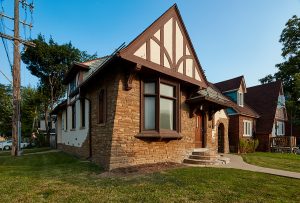 POST-WAR MODERNISM, 1945-1960
POST-WAR MODERNISM, 1945-1960
After World War II the city expanded rapidly and sub-stations were needed in the new residential neighbourhoods that were being built on the mountain and in the east end of the city. To serve the increased number of residential customers, a new purpose-built hydro office tower was built on John Street South, adjacent to the expanded Hughson Station. At the time, it was the largest and most modern office building in Hamilton. It has a steel frame and is clad with Queenston limestone. It was designed by George T. Evans in a Streamline Moderne style that combines influences from Art Deco and International style architecture. The new office building created a modern image for Hamilton Hydro. The Bartonville Station on the corner of Barton Street East and Parkdale Street was also designed by George T. Evans in the same Streamline Moderne style.
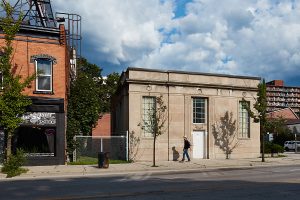
Post-war sub-stations continued to be designed in various architectural styles to fit in with the neighbourhoods they were located in. Advancements in technology allowed the equipment in the newer stations to be monitored remotely, and sub-stations become more compact and the amount of glazing is reduced. The reduced amount of glazing in post-war stations is a marked contrast to the large windows that were a major feature of the early sub-stations. The Gibson Station uses glass block in abstract patterns; the architect of this lovely building is unknown. The firm of Prack & Prack designed a station on the mountain on Mohawk Street influenced by International Style architecture in its lack of ornamentation and cubic volumes.
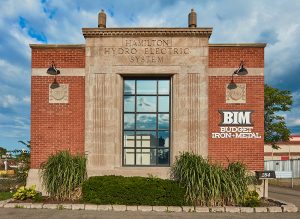
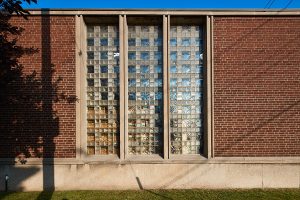
Many of the older sub-stations that are still operational have had the windows bricked in for safety and security reasons. Those that have been decommissioned and re-purposed are highly sought after because of the high quality of their materials and design and the open interiors flooded with natural light
The Cataract Power Company operated in parallel with the municipal system until 1930.
The company’s assets were purchased by Ontario Hydro and its local infrastructure, including sub-stations, was transferred to Hamilton Hydro. The DeCew Generating Station is still in use today and is the oldest operating hydro-electric generating station in Canada.


Special thanks to the following supporters;
Ontario Society of Architects | Hamilton Burlington Society of Architects |
Young Architects of Hamilton
Project Curator: Chris Harrison, Architect
Photography: Francis Fougere
Research: Megan Hobson, Architectural Historian
Graphic Design and Communications: Jennifer Kay
Curatorial Advisor: Ken Coit
